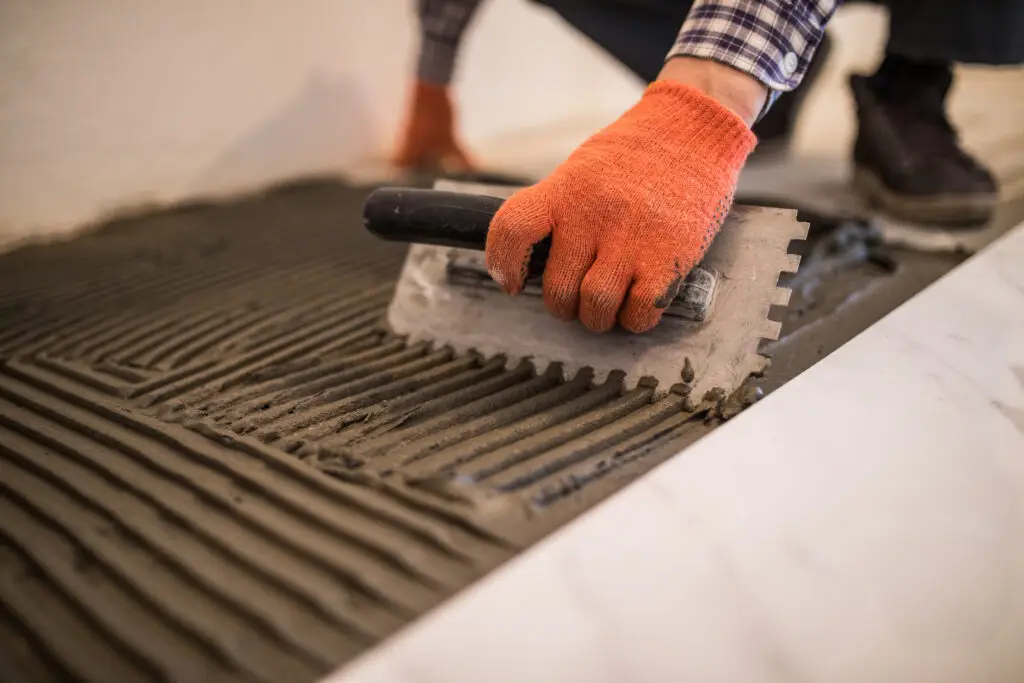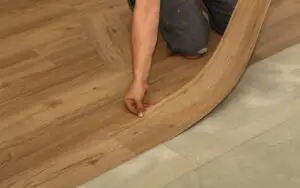Understanding Wall Preparation for Tile
The Importance of Proper Wall Preparation
Adhesion
Proper wall preparation is essential for ensuring that the tiles adhere properly to the wall surface. If the wall is not properly prepared, the tiles may not stick, and can eventually fall off, which can create a safety hazard, and will also require costly repairs. This is why a professional installer will always take the time to properly prepare the surface, to avoid these types of problems.
Moisture Resistance
Proper wall preparation is also important for providing moisture resistance, which is especially crucial in areas that are prone to moisture, such as bathrooms and kitchens. If the wall is not properly sealed, or waterproofed, moisture can seep behind the tiles, and can lead to mold growth, mildew, and other types of water damage.
Longevity
Proper wall preparation will also contribute to the longevity of the tile installation. If the wall is properly prepared, the tiles will be less likely to crack, chip, or become damaged over time. This will ensure that your tiles will look great for many years to come, and will also help to protect your investment.
Common Wall Surfaces
Drywall
Drywall is a common wall surface, that is often found in many homes and businesses. It is relatively inexpensive, and is easy to install, however, it is also very susceptible to moisture damage, and is not always the best choice for tiling. If you plan to install tile on drywall, you should always consult with a professional installer, to make sure you take the proper steps, and follow all of the industry best practices.
Plaster
Plaster is another common wall surface, that is often found in older homes. It is more durable, and water resistant, than drywall, but it can also be more difficult to work with. If you plan to install tile on plaster, you should make sure that it is properly cleaned, and primed, before you begin.
Cement Board
Cement board is a water-resistant material that is specifically designed for use in wet areas, such as bathrooms, and kitchens. It is often the best choice for tiling projects, as it provides a stable, and durable, surface that is not affected by moisture. Professional installers will often recommend using cement board, as it offers the best long-term protection for your walls.
Can You Tile Directly onto a Wall?
Direct Tiling on Drywall
Pros and Cons
Pros: Direct tiling on drywall can save time and money, as it eliminates the need to install a separate backer board.
Cons: Direct tiling on drywall greatly increases the risk of moisture damage, poor adhesion, and a reduced lifespan for the tile installation. It is often not recommended, especially in wet areas, such as showers, or bath areas.
Considerations
If you decide to tile directly onto drywall, it is very important to use a high-quality adhesive, and to properly seal all of the grout lines, to prevent moisture from seeping behind the tiles. It is also important to only attempt this in areas that are not frequently exposed to moisture, such as a backsplash in a powder room.
Direct Tiling on Plaster
Pros and Cons
Pros: Direct tiling on plaster can be a viable option if the plaster is in good condition, and is properly prepared.
Cons: Plaster can be difficult to work with, and may require extensive repairs, before tiling. There is also a risk of the plaster cracking, or crumbling, over time, which can cause the tiles to come loose.
Considerations
If you decide to tile directly onto plaster, you should make sure that the plaster is clean, dry, and free of any loose or flaking material. You should also apply a primer, to the plaster, to improve adhesion, and to help prevent moisture from seeping behind the tiles. It is always wise to consult with a professional installer, to get their advice, before attempting this type of project.
Recommended Wall Preparation Methods
Using Tile Backer Board
Benefits
Using tile backer board, such as cement board, or fiber cement board, is generally the most recommended method for preparing walls for tile installation. Tile backer board provides a stable, water-resistant surface, that is specifically designed for tiling projects. It is easy to install, and it can also add insulation, and soundproofing, to the wall.
Installation
Installing tile backer board, involves cutting the board to size, and then attaching it to the wall studs, using screws, or nails. You should always follow the manufacturer’s instructions carefully, when installing tile backer board, and also be sure to properly seal all of the seams, with a waterproof tape. Professional installers are very familiar with all of these installation techniques, and will always ensure that the job is done correctly.
Waterproofing Techniques
Applying Sealants
Applying a sealant to the wall surface, before tiling, is also essential for providing moisture protection. There are many different types of sealants available, including liquid-applied membranes, and waterproof tapes. It is always best to choose a sealant that is specifically designed for use in wet areas, such as bathrooms and showers.
Using Waterproof Membranes
Waterproof membranes are thin, flexible sheets, that are applied to the wall surface, to create a waterproof barrier. They are often used in conjunction with tile backer board, and will provide an extra layer of protection against moisture damage. Waterproof membranes are typically applied with a trowel, and are then allowed to dry completely, before tiling.
DIY vs Professional Wall Tiling
Risks of DIY Wall Tiling
Improper Preparation
DIY wall tiling can lead to many problems and potential risks, such as, improper surface preparation, which can cause the tiles to come loose over time, and this often results in the need for expensive repairs, or rework. This is why it is very important to follow all of the recommended steps, or to simply hire a professional, who is familiar with the process.
Installation Errors
DIY tiling projects are also prone to installation errors, such as uneven grout lines, misaligned tiles, and poorly cut edges, which will always detract from the overall appearance of the finished product. Professional installers are highly skilled, and trained, to always prevent these types of problems, and will always guarantee their work, and ensure your satisfaction.
Benefits of Professional Services
Expertise and Precision
Hiring a professional tile installer will provide you with expertise and precision, and will also ensure that the project is completed correctly, the first time. They are familiar with all of the best practices, and will use the correct tools, techniques, and materials, to ensure a long-lasting, and beautiful result.
Long-Term Value
Professional tiling services also provide long-term value, by ensuring that your tile installation is protected from moisture damage, and is also able to withstand the normal wear and tear of daily life. Professional installers also offer warranties on their work, which will protect you from any unexpected problems, and will give you added peace of mind.
Case Studies: Tiling Outcomes
Example of Failed Direct Tile
A homeowner attempted to tile directly onto drywall in their shower, without properly waterproofing the wall. Over time, moisture seeped behind the tiles, causing mold and mildew growth, and eventually leading to the tiles falling off the wall. This cost the homeowner a significant amount of money to repair, and they had to hire a professional installer, to completely redo the project, using the correct methods.
Example of a Successful Tile Project
Another homeowner hired a professional installer, to tile their bathroom walls. The professional installer properly prepared the walls, by installing tile backer board, and a waterproof membrane, and then they installed the tiles with precision, and attention to detail. As a result, the bathroom walls looked beautiful, and remained free from any moisture damage, for many years to come.
FAQs & Answers
It is generally not recommended to tile directly onto a wall surface without proper preparation, as this can lead to adhesion issues, moisture damage, and a shorter lifespan for the tile. Professional tile installers know that proper preparation is essential to a successful job, and will often take steps to ensure the walls are ready, before beginning any type of tiling project.
Common wall surfaces include drywall, plaster, and cement board, and each will require a different type of preparation before tiling. Drywall may need to be sealed, or replaced with tile backer board, while plaster will need to be properly cleaned and primed. Cement board is one of the best surfaces, and will often require no special preparation. Professional installers are familiar with all of these different types of wall surfaces, and will know the best practices for each.
The potential pros of tiling directly onto drywall or plaster, might include saving on material costs, and reducing installation time. However, the cons often far outweigh the pros, including a greater risk of moisture damage, poor adhesion, and a reduced lifespan for the tile. Professional installers are always able to make the right recommendation for your specific project.
Tile backer board is a water-resistant material that is designed to provide a stable, and durable surface for tile installation. It is often recommended for wall tiling projects, as it is less prone to moisture damage than drywall or plaster, and will also provide a strong base for the tile to adhere to. Professional installers often recommend tile backer board, especially in moisture-prone areas, such as bathrooms and kitchens.
Professional tile installers will always take specific steps to ensure a long-lasting, and successful wall tiling project, by properly preparing the wall surface, using the correct type of adhesive, applying a waterproof membrane, and using industry best practices, throughout the installation process. They will also always guarantee their work, which will give you added peace of mind that your project will last for many years to come.





